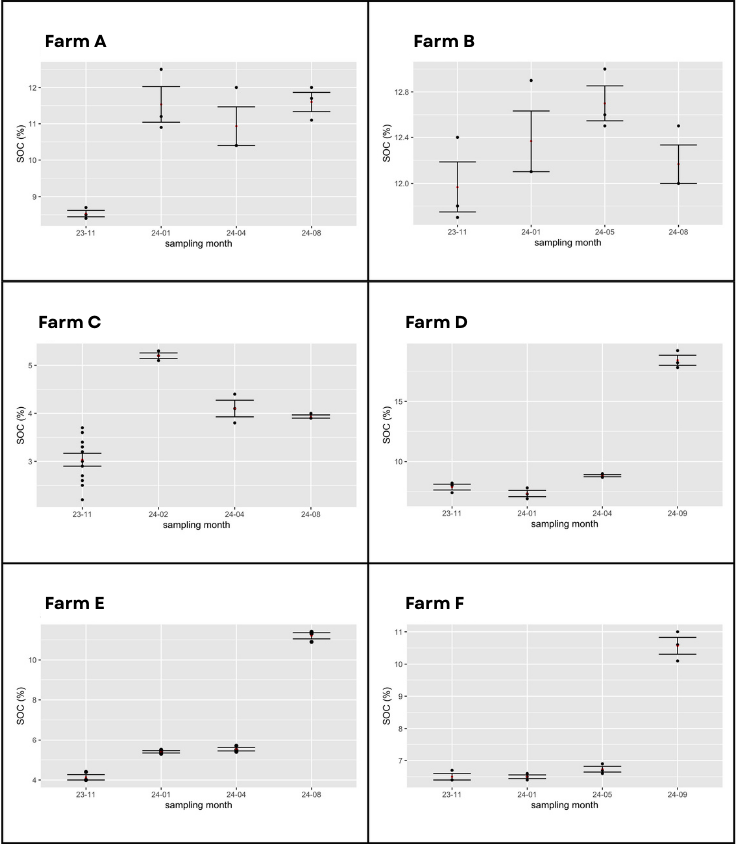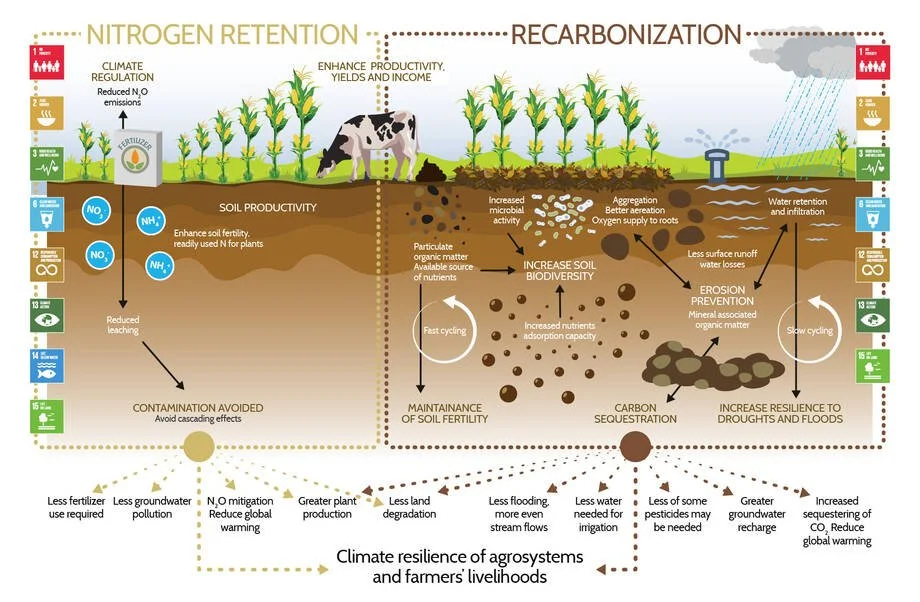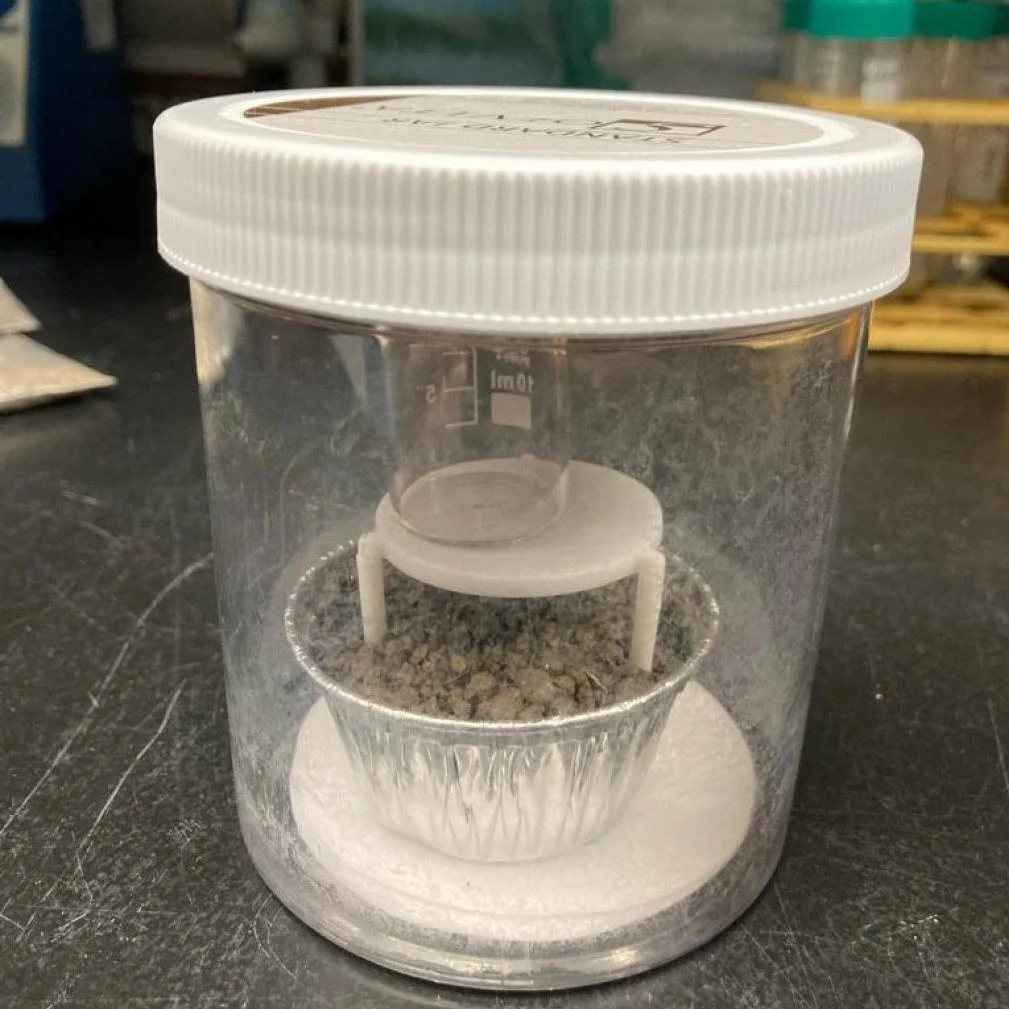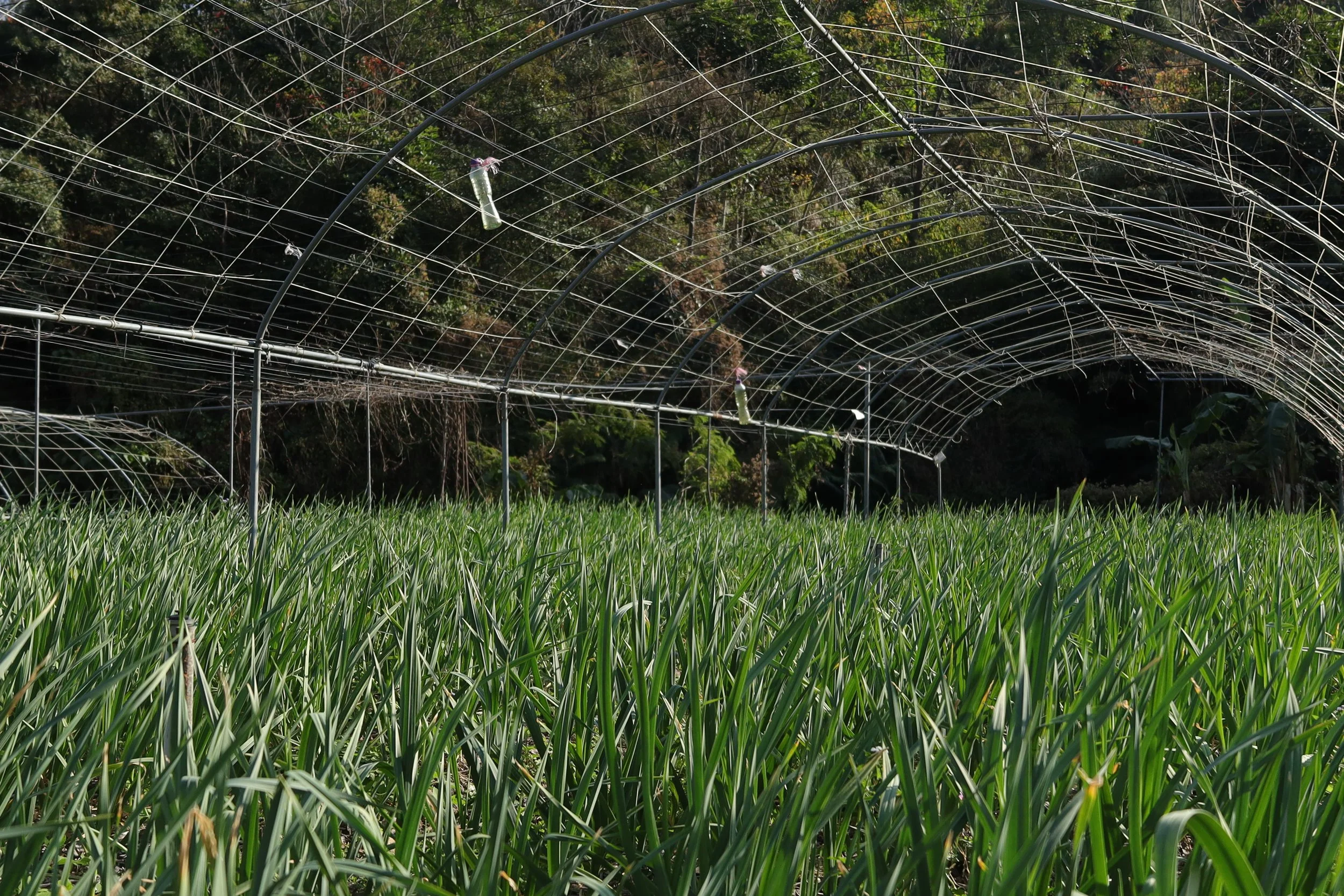Restoring Soil by Storing Carbon:A Hong Kong Story.
Edited by our locally appointed soil expert Mrs Mak from Homeland Green
How to lose our soil in 100 years…
Ending the warmest year on record in human history, we arrive at another year of uncertainty with potentially numerous extreme weather events. It should come as no surprise that even a balanced carbon cycle is not enough to combat the current climate change. The way mankind managed land in the past century has destroyed the carbon sinks, releasing colossal amounts of greenhouse gases into the atmosphere that wreak havoc on the climate.
Regenerative agriculture offers a pathway in the food sphere to combat climate change, as well as restore degraded land, by sequestering atmospheric carbon back into soil, which is considered the second largest carbon sink globally. In Hong Kong, Zero Foodprint Asia, in collaboration with Homeland Green, through various Restore Projects, has demonstrated the feasibility of regenerative farming, its carbon sequestration potential, and its relevance to reshaping our food system.
Ever since Restore 2023, we have employed, among others, soil tests to gauge the progress of our grantee farms. Soil samples are collected by our technical assistance providers (TAPs) at different stages of the project, administered by our former program coordinator Hilda with reference to the Soil Health Institute, and tested with CUHK’s technical support. The results shed light on the encouraging outcome of the Restore Projects! Let’s explore it together!
Soil Organic Carbon (SOC)
SOC is one of the most vital assessments as it measures carbon content within soil organic matter (SOM) that contributes to soil fertility, nutrient retention, moisture retention, structure, and carbon sequestration. It is a direct assessment of soil quality and productivity as you can already tell! A decrease in soil carbon content contributes greatly to land degradation and has a detrimental impact on the ability to produce food. A recent study in Southeast Asia shows that the SOC on industrial plantations is less than 2%.
Figure 1.
(To ensure a more accurate result, several tests were conducted per assessment. Each black dot indicates individual test results with the average and standard error shown as a red dot and I-bar respectively.)
So how did our Restore grantee farms do in 2023-24? Figure 1 comprises the test results of six farms across the year, with the majority showing a slight increase in SOC content. Farm A and Farm B are our superstars in that they were able to maintain their SOC content above 10%, constantly producing crops with excellent health and minimal disorder. Nonetheless, it doesn’t mean the other farms that managed a slight increase in and/or maintained the SOC level have not achieved an impressive accomplishment. In view of farms are constantly removing biomass (harvesting crops) with very little actually contributed to the existing SOM (not to mention SOM typically contains only around 58% of carbon), so immense efforts are needed to even maintain the level if not increasing.
“First, your crop harvest removes up to 50% of the biomass grown. Then, about 90% of the remaining crop biomass is decomposed by soil organisms leaving only 10% contributing to soil organic matter. You also have to account for the annual 1-5% losses of existing soil organic matter.”
– Andrew McGuire, Agronomist and Professor from the Center for Sustaining Agriculture and Natural Resources of Washington State University
Source: FAO
Conventional farms that continue tillage and fertilizer/pesticide use quickly reduce SOM levels in soil and accelerate soil erosion. To think the Paris Agreement only aims to increase 0.4% per annum, a 1% increase in our grantee farms within a year (such as Farm C) demonstrates a notable improvement that makes for food security and climate restoration.
Note:
The drastic SOC increase for Farms D, E, & F in August/September 2024 might be caused by incorporating compost in the soil sample and should be taken with a grain of salt till further results are available.
Soil Respiration
While SOC assessment gives us an idea of how much carbon is there in the soil, soil respiration test on the other hand, provides a more vivid account of what is going on beneath our feet. In essence, soil respiration measures CO2 produced by the soil organisms, including microbes (bacteria, fungi), plant roots, and soil fauna (earthworms and mites, etc.), thus their nutrient cycling capability that sustains plant growth. The two assessments analyze soil health and are similar in nature; the higher measurement represents higher SOC availability and microbial activity.
Figure 2.
Most farms’ soil respiration results in Figure 2 reflected an increasing trend across the year. Microbes respire when they decompose organic matter, turning them into forms available for plants. From Figure 2, we can see that soils from Farms A, B, C & D present a very active microbial interaction, while the other two farms maintain a steady level or on a rising trend. Obviously, our grantee farmers did well in implementing regenerative practices that actively feed the soil microbes and provide the best for their crops.
Note:
The reading for Farm F in April 2024 should be disregarded as there might be a testing error.
Soil science is both complex and contextual. There is no silver bullet for restoring degraded soil, hence our appointed local soil expert often recommends our grantees to implement as many regenerative practices as they can within their capability to achieve the best results.
What’s Next?
Soil samples will continue to be collected periodically in this Restore year to assess the progress of our grantee farms. Our grantee farmers strongly believe in nature-first land management as they continue to maintain minimum soil disturbance, apply compost and organic material, plant cover crops, and implement many more regenerative practices suited for the local context. We believe that, with the current momentum, significant improvements should be underway, and we look forward to the exciting results this year! Stay tuned.
References and further readings:
https://www.sciencedirect.com/topics/earth-and-planetary-sciences/soil-organic-carbon
https://www.agric.wa.gov.au/measuring-and-assessing-soils/what-soil-organic-carbon
https://csanr.wsu.edu/putting-numbers-to-the-difficult-task-of-increasing-soil-organic-matter/
https://www.nrcs.usda.gov/sites/default/files/2022-10/Soil%20Respiration.pdf









